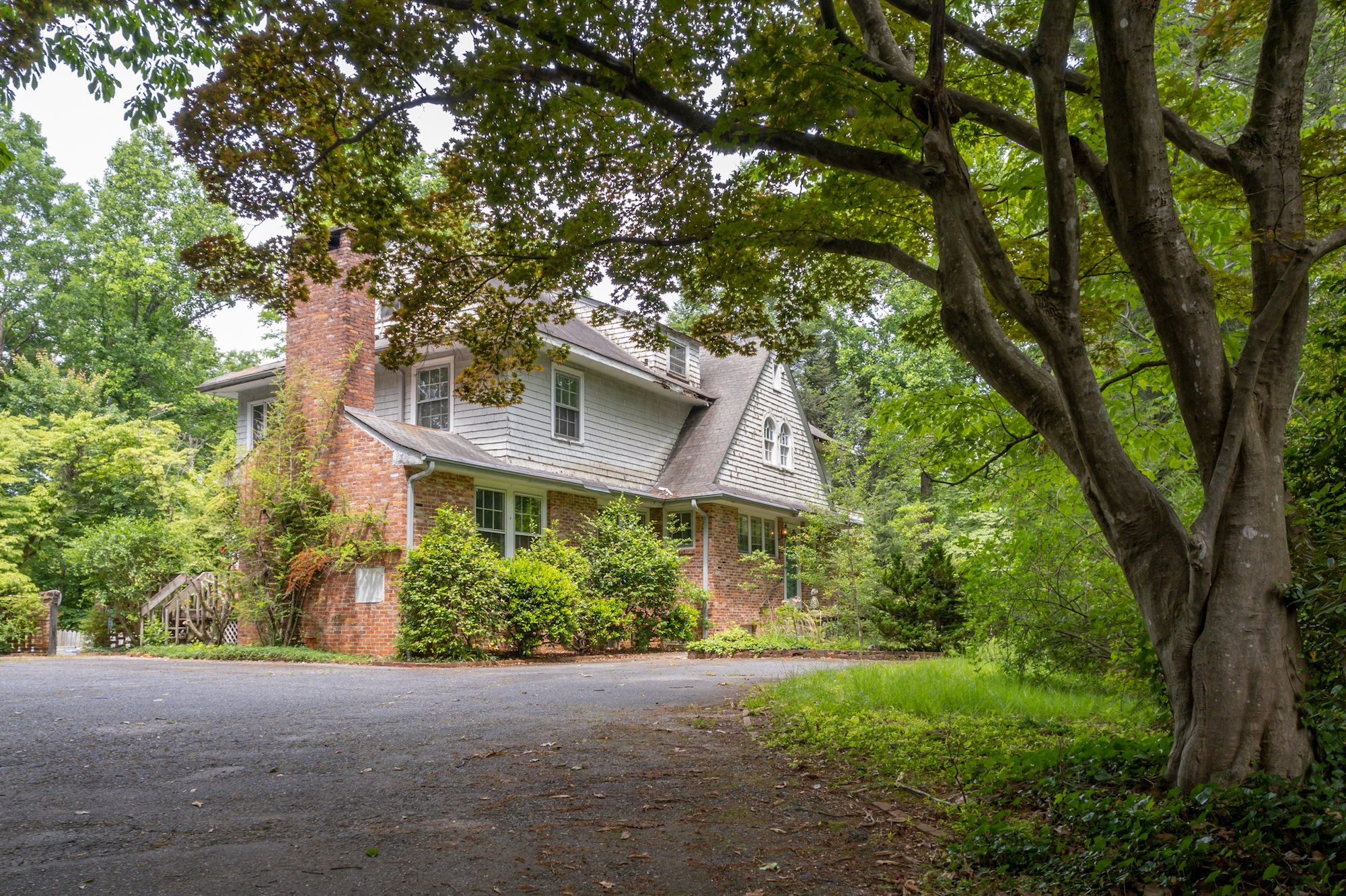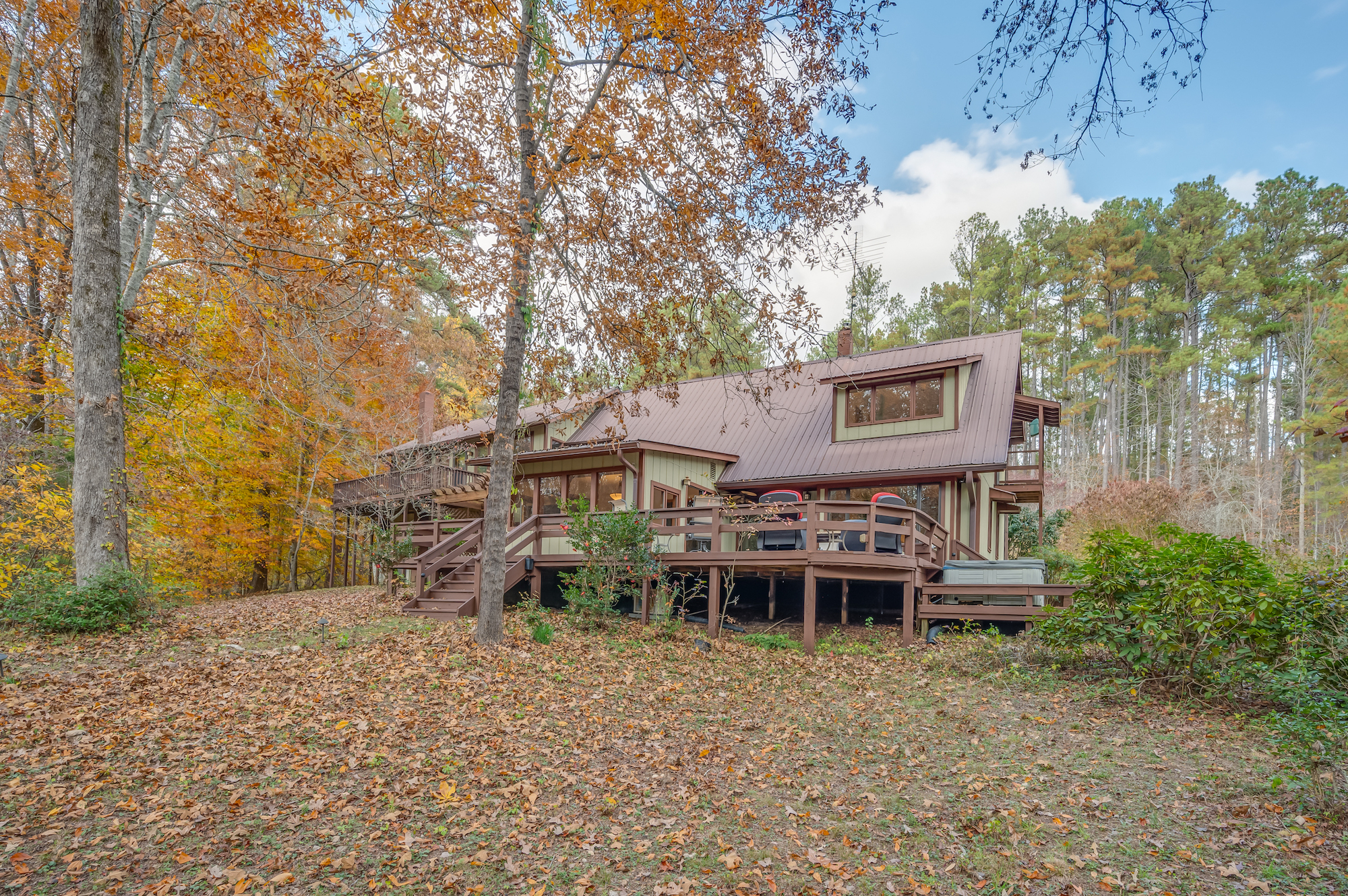Columbus
Unlike most communities, towns or cities in Western North Carolina, Columbus did not grow from its position as a crossroads, its nearness to a body of water, or a gradual accumulation of residences. It was born overnight, deliberately carved from 100 acres of pure wilderness on what was then known as Foster Race path in the shadow of Fosters Mountain, known today as Chocolate Drop. One of the most beautiful views of the Columbus area can be seen from White Oak Mountain. On your way to the top of the mountain, you will cross the Shunkawaukan Falls which is a main source of water for Columbus. The falls are a spectacular 500 foot split level waterfall that can be seen from the bridge that crosses over I-26. This water goes to a reservoir on Foster Mountain or Chocolate Drop!
Located beside White Oak Mountain is Tryon Mountain or Tryon Peak, which becae the landmark of the Cherokee Boundary negotiated by Gov. William Tryon and the Cherokee Chiefs in 1767. Elevation of the peak is 3132 feet. This area had until then been the hunting grounds of the Cherokee and Catawba Indian tribes.
On White Oak Mountain is Sunset Rock with an elevation of approximately 3000 feet. Looking west over the Green River and Holbert’s Cove, on a clear day you see 3 states and 16 counties.
Seeking to avoid the 1847 squabble that greeted the first effort to find a location for a county seat, the North Carolina state legislature in 1855, named three out-of-county men as Commissioners to locate Polk County’s seat at or within two miles of the geographical center of the county. They chose Fosters Race path, in the shadow of Fosters Mountain. The Commissioners were authorized to purchase, or receive by donations, a tract of land on which to locate a county seat, not to exceed 100 acres.
Columbus was divided into 94 lots, with seven lots reserved for public, civic, and spiritual needs. At the northern end of the perfect rectangular 100-acre parcel, the Commissioners reserved a parcel for public use. The streets were laid out, some as wide as ninety feet, and an auction was held on October 17, 1855 to sell the lots. A total of 59 lots were sold, bringing in $16, 499 into the County coffers for the purpose of erecting public buildings.
With the permission of the state, the original five commissioners began the work of organizing a town. Since the town’s main streets carry their names (Null, Walker, Simms, and Ward), the Commissioners are easily remembered. Also, Peak Street named for the engineer of the town), and Hampton Street (one of the land donor’s for the town site). If you should be driving up Peak Street, look up toward White Oak Mountain and you will see the peak of the mountain straight ahead.
Some of these people were the direct descendants of the earliest settlers who had located at the base of the White Oak Mountain range and who had fought in the Revolutionary War.
The leaders of the Town of Columbus owned large plantations that were located just outside of the town limits. These were the days of the hoop skirt and the “Scarlet O’Hara – Rhett Butler period”, days of gallant southern gentlemen and the heyday of the South when, “cotton was king”.
During this same period, North Carolina was the nation’s leading producer of gold (until the ’49 California Gold Rush). In Columbus, gold was mined along Horse Creek and White Oak Creek. It is said that Hampton found a gold nugget of such size and value that he was able to buy, among other things, many acres of land.
These earlier days of history had many colorful characters, including “Old Bill” Williams, well-known mountain man, trapper, and scout who helped survey the Santa Fe Trail and guided the ill-fated Fremont Expedition of 1848. He was born here in 1787
County records to do not indicate an official date the Polk County Courthouse was completed, but the court records indicate the Courthouse was in use by December 1857. The same structure now listed in the National Register of Historic Places remains in use.
As the new Polk County seat began to take shape from the wilderness, the need for the incorporation of the Town resulted by approval of legislation by the General Assembly on February 2, 1857 incorporating the Town. The new Town was given corporate limits of only half a mile square from the courthouse square – limits that have not been changed except for voluntary annexations, to this day.
Columbus was originally laid out with a church at each corner of the main street. Two of these are still in their original location today. Columbus Baptist Church (established 1857) first structure is still in use, although it has been added to over the years. Columbus Presbyterian Church, established in 1895, is also in the original location but due to a fire the original building has been replaced. More recently established are the Columbus United Methodist Church in 1961 and the Kingdom Hall of Jehovah’s Witnesses in 1976.
Physician, senator, and farmer, are some of the hats worn by Dr. Columbus Mills during the course of his 74 years, most of them in service to his beloved Polk County. Mills has been called the father of Polk County for his untiring efforts to carve the county from Rutherford and Henderson Counties. The NC legislature in 1855 named the new county seat Columbus- in his honor.
Around 1888 Mr. Frank Sterns, who was to have a great impact on Columbus, came to Polk County. He built and established the first school in 1991 for elementary students. The following year he established the first kindergarten and public library in Polk County. This building is still in use on MIll’s Street. Mr. Stearns also envisioned White Oak Mountain as a sanitarium for those desiring the mild climate afforded by the Thermal Belt Area. His original plat for development of the White Oak Mountain area is on display in the office of White Oak Mountain Development. He was later (1922) to build and donate to Polk County the Stearns Institute as a facility of higher education. His stipulation was that the building and site would always be used for education purposes. This building now houses the offices for the Polk County Board of Education.
Since before the turn of the century, people have been drawn to this beautiful “Gateway to the Mountains” with its temperate climate, recreational, cultural, and equestrian traditions. There is something here for everyone of all ages and interests.
Columbus is accessible from I-26, I-74, and Hwy 108. Both I-85 and I-40 are within thirty minutes of Columbus, affording the luxury of the best of both worlds — quiet, serene surroundings and yet easy access to the attractions and facilities of nearby cities.
Columbus is well know for it’s annual Fabulous 4th of July Celebration which brings thousands from the surrounding area to town for several days of family fun activities. The children’s rides are traditionally located in Stearns Park which is across from the historic County Court House in Columbus. Around the park is a small walking track, a gazebo and picnic tables.
The Polk County Courthouse was built by slaves, using native clay bricks in 1857. In front stands the original slave block that is now covered with a planter. It is on the National Historic Register.
Built to honor the men who fought and died in WWI, the Doughboy Statue, located at Court Street, was constructed of local materials and built facing the mountains; the young man depicted is leaning on a White Oak stump.
Across from the Doughboy Statue, in Stearns Park at the corner of E. Mills Street and Hampton Court is the Warrior Mountain Monument Marker commemorating the defeat of the Cherokee Indians in 1776 at Howard Gap.
Gibson Park is located on Fork Street in Columbus and is run by the Polk County Recreation Department and it offers a public swimming pool and picnic area.
And new to the line up of area events, is the Columbus Day Celebration held in the Fall.
The Polk County Historical Association’s collection can be found in the Historical Museum at 60 Walker Street. The museum includes area artifacts dating back to the time of the Cherokee as well a the cannonball that was fired on Fort Sumter at the beginning of the Civil War. The museum is open Tuesday and Thursday 10 am to 1 pm and Saturday 10 am to 4 pm. Monthly programs with fascinating speakers are held on the first Tuesday of each month, September through May at 2:30pm.
C.A. Hughes ordered a kit from the Sears Catalog and built this house in 1894. Original in every detail, this home is located on N. Peak Street.
For more information, check out the Official Columbus website at:
http://www.columbusnc.com/index.php?option=com_frontpage&Itemid=66
or go to Polk County’s Economic Development website at:









